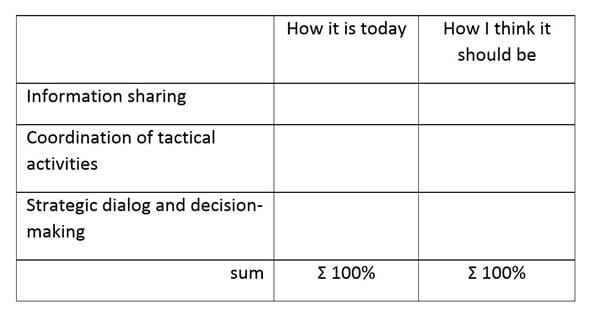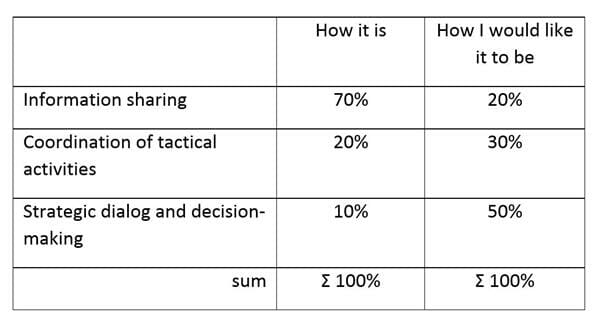
Teamflow: The essential element of effective leadership
I believe that today’s biggest untapped competitive advantage lies in effective leadership teams. Effective leadership teams work well together, and are the best executors of strategy. We call this ability for leaders to work well together teamflow.
Teamflow is the essential element of effective leadership teams that allows them to achieve their goals efficiently and excellently. In today’s world, where the role of leadership teams in strategic execution is dramatically changing, with novel organizational structures and an unprecedented need for organizational agility, teamflow is more important than ever.
In my 3-part series on teamflow, I will critically examine effective and ineffective teams, the 10 reasons why some leadership teams lack flow, and 5 ways to overcome these issues, all using real world examples from my experience working with teams in the field. Specifically, this series will focus on the team most critical for great strategic execution – your organization’s leadership team.
So you’re a senior leader at your company. How would you describe the crew of people that you work with? Are you a “group of leaders” or a “leadership team”? Many groups of leaders form what they would call a “leadership team,” but far too few of these teams are actually effective – and that is what makes all of the difference.
Here’s how you can tell whether or not you’re a part of an effective or ineffective leadership team:
Qualities True for Effective Leadership Teams:
- Hold lively and engaged meetings
- Focus meetings on issues that are strategic in nature
- Make few decisions, but most decisions have a large organizational impact and serve the interest of the team and the organization as a whole
Qualities True for Ineffective Leadership Teams:
- Hold meetings that some members view as “boring and a waste of time”
- Focus meetings heavily on reporting and sharing information
- Make decisions with low buy-in and follow-through, which often only serve the interest of an individual or the team they represent
Effective leadership teams are able to have focused, productive meetings that create positive outcomes in alignment with the goals of the organization as a whole. Ineffective leadership teams, on the other hand, struggle with using time efficiently and making goals that everyone feels are valuable to the team and organization as a whole. Moreover, meetings for ineffective leadership teams are frustrating, time-costly, and lack tangible results.
The difference between these two groups is teamflow. Effective leadership teams have it, and ineffective leadership teams don’t. That’s why effective leadership teams are so much better at executing their strategy and achieving their goals.
The good thing is, like all skills, teamflow can be learned and implemented through practice. However, before you can figure out how to get your teamflow on point, it is essential to know how to determine where your team stands on the spectrum from effective to ineffective leadership team.
How is this distinction identified in practice?
For any organization’s leadership, whether they are an ineffective leadership team aiming to become an effective leadership team, or an effective leadership team looking to get even better, the first step is to run through a simple exercise to uncover where their organization’s leadership stands. Have them draw the following table on a piece of paper:

Then, ask them the question, “How do you as a team spend your time during leadership team meetings?” and have them to fill in the table with their responses. In my experience, the answer to this question is typically as follows:

Most ineffective leadership teams aspire to move away from spending their time sharing information, and instead focus on forward-looking strategic dialogue. Seems to make sense, right? And yet many ineffective leadership teams are still stuck in their old ways of thinking and working together, unable to make the changes they desire. How is this possible?
These issues are not due to a lack of awareness or malicious intent, it just ends up appearing that way. Instead there are a number of hidden barriers that prevent leaders from shifting the way they spend their leadership team’s time.
In the next 2 articles in this series, learn the 10 reasons why leadership teams get disrupted and my top 5 tips for overcoming these issues.
This article also appears on bts.com:
Are You Part of an Effective Leadership Team?
Paul Bence
Challenge your decision making
To help companies accelerate the development of great leaders, BTS, an Advantage thought leader partner, has created a series of online iLead Challenge™ Simulations.
These are immersive, video-based business simulations that feature important leadership moments. Participating employees make critical decisions and apply leadership skills to manage simulated team members and navigate challenging, realistic situations.
Sign up for complimentary 30-day access to the Innovative iLead Challenge Simulation, Fostering an Innovation Culture. See if you make the most effective choices to lead your team at Future Co. on an innovation journey.
 BTS, an Advantage Performance Group thought leader partner, is a global professional services firm headquartered in Stockholm, Sweden, with some 500 professionals in 33 offices located on six continents. We focus on the people side of strategy working with leaders at all levels to help them make better decisions, convert those decisions to actions and deliver results.
BTS, an Advantage Performance Group thought leader partner, is a global professional services firm headquartered in Stockholm, Sweden, with some 500 professionals in 33 offices located on six continents. We focus on the people side of strategy working with leaders at all levels to help them make better decisions, convert those decisions to actions and deliver results.
- Teamflow Part 2: The top 10 derailers of leadership teams - March 19, 2018
- Teamflow: The essential element of effective leadership - February 27, 2018

